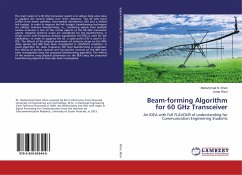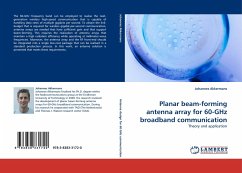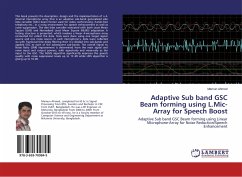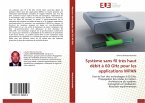The main target of a 60 GHz transceiver system is to obtain data rates close to gigabits per second (Gbps) over short distances. The 60 GHz band suffers from severe pathloss, inter-symbol interference (ISI) and a limited link budget. In order to improve the link budget, beamforming techniques are utilized. Antenna beamforming, i.e., combining signals from multiple receive antennas is one of the crucial aspects of the 60 GHz transceiver system. Adaptive antenna arrays are considered for the beamforming. A single carrier with frequency domain equalization (SC-FDE) is used for the modulation. In order to suppress the ISI, a cyclic prefix (CP) is used in SC-FDE. The effects of the physical parameters of antenna arrays on the RMS delay spread and BER have been investigated in LOS/NLOS condition. A novel algorithm for radio frequency (RF) level beamforming is proposed. The effects of perfect channel and non-perfect channel on the BER have been investigated using the proposed beamforming algorithm. The effects of the antenna array physical parameters on the BER using the proposed beamforming algorithm have also been investigated.
Bitte wählen Sie Ihr Anliegen aus.
Rechnungen
Retourenschein anfordern
Bestellstatus
Storno








